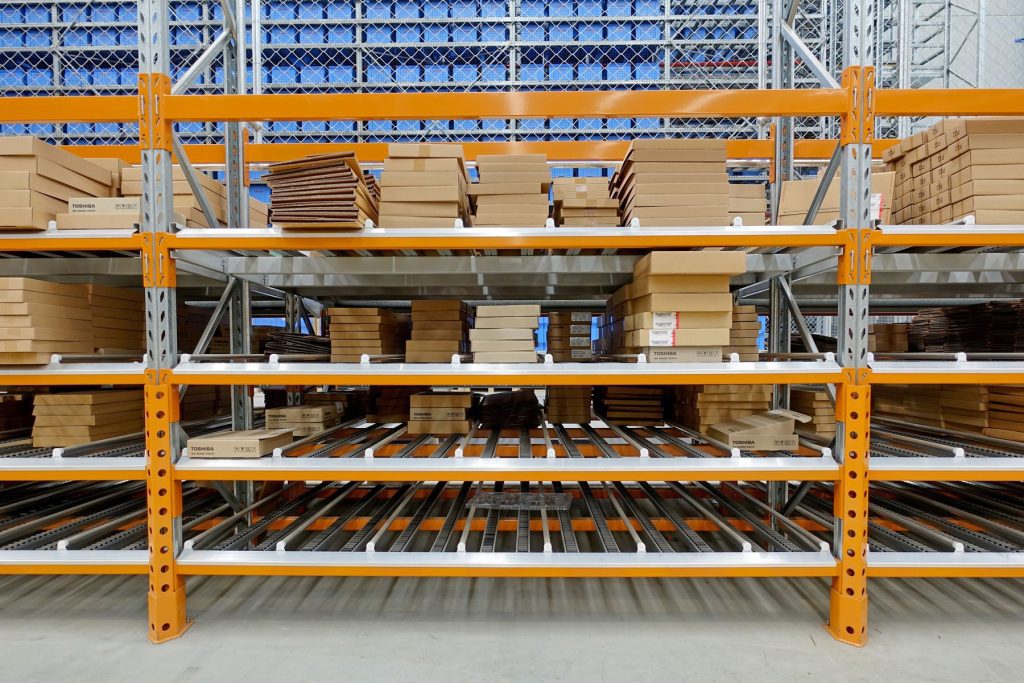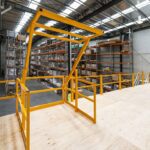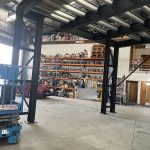There are a lot of ways to store goods in warehouses, and what’s used will be dependent on how the goods need to be accessed.
The main ways to store goods in warehouses is either on pallet racking or on shelving. But which should you use and for what circumstances? Let’s explore.
Pallet Racking
Pallet racking is used for denser storage of goods, typically on pallets. Storing goods on pallets is convenient because the same SKUs can be stored together with little space between them. Pallet racking can be as tall or wide as needed, and is generally very efficient for storage.
The downside to pallet racking is that it typically needs materials handling equipment, like forklifts, to access the goods being stored. It’s not designed to access a single unit, but rather the whole pallet of goods being stored. From there, the goods can be unloaded from a pallet and picked individually.
This is where shelving comes in.
Shelving
Industrial shelving, on the other hand, is ideal for picking and packing individual items.
A typical way of storing goods in a warehouse is having goods on pallets, with those pallets stored on racking. Pallets can then be removed from racking and unpacked onto shelving for easy picking and packing by warehouse workers. Then they can either be shipped individually to customers or packed onto other pallets if needed.
Shelving typically doesn’t need specialised equipment for access and is usually just accessed by workers with their hands. Of course, for some shelving setups, something basic like a ladder might be used.
Industrial shelving comes in different varieties and can be set up to suit the warehouse or storage need of a business. Carton live storage, for example is sloped shelving that pushes goods to the front of the shelving as they’re picked, making it faster and easy to unload the shelving.

Using Shelving and Racking Together
Most warehouse don’t just have racking or just shelving. Pallet racking affords denser storage, with goods moved to shelving as they’re needed.
A challenge with shelving is that it can only be as high as workers can reach, or maybe a little higher with aid of a ladder. This creates a lot of wasted vertical space. To get around this, mezzanine levels are often used in warehouses. A mezzanine can either be constructed on top of pallet racking or over shelving, allowing two layers of shelving for denser storage.
When a mezzanine is used, the challenge is then how to get goods down from the mezzanine level. After all, having workers move up and down stairs is inefficient and potentially dangerous. For this, a conveyor system can be designed, quickly moving things from one level to another.
It’s All Part Of An Integrated Warehouse
These are all the basic of warehouse storage that work together to create efficiencies and move things quickly. With that in mind, intelligently designing a warehouse is a challenge in itself, which requires experience and consideration. If you’re looking for more efficiencies in your warehouse, speak to us about how we can help.




